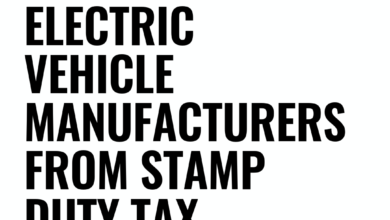Soaring Electric Vehicle Sales Propel Battery Demand to Record Highs in 2024

An analysis of recent market trends indicates a remarkable surge in battery demand, hitting an unprecedented milestone of 230 gigawatt-hours (GWh) in the first quarter of 2024, demonstrating the growing reliance on battery-powered solutions, particularly in the automotive industry. The electric vehicle (EV) sector accounted for a substantial majority of the demand, as sales figures for EV batteries soared alongside the purchase of 3.1 million electric vehicles. Additionally, the stationary storage market, largely consisting of batteries for stationary applications like grid storage, showcased a near 40% year-over-year growth.
Despite experiencing a minor dip in demand when contrasted with the last quarter of the previous year, the battery industry’s future outlook shines brightly, attributed in part to the lined-up grid-scale storage projects and the increased acceptance of innovative battery technologies. Projections for the year suggest this trend will continue, with an expected year-over-year increment of 25% to 30% in battery demand, which is anticipated to push the industry beyond the 1 terawatt-hour threshold for the first time.
Further reinforcing optimistic forecasts for the year, Iola Hughes, the leading research expert at Rho Motion, stated a confident outlook for the battery market, underscoring that despite negative market sentiments, the demand for batteries is fortifying the foundation for solid growth in 2024. This reflects a robust and expanding industry set to support a greener and more electrified future.
Summary: The battery market, particularly influenced by electric vehicle adoption rates, has experienced an all-time high demand in the first quarter of 2024, with the expectation of continued growth throughout the year, signaling strong industry health and innovation.
Battery Industry Growth and Market Forecasts
The battery industry has displayed a significant upturn in recent market trends, with a record-breaking demand of 230 GWh reported in the first quarter of 2024. This growth is primarily driven by the increasing penetration of the electric vehicle (EV) market, where batteries are a core component. During this period, EV sales mirrored the battery demand, given the sale of 3.1 million electric vehicles, thus underscoring the role of EVs as a primary consumer of battery technology.
Furthermore, the stationary storage market has also contributed to the hike in demand, achieving almost a 40% year-over-year growth. These systems, often used for stabilizing electrical grids and storing renewable energy, are becoming increasingly vital as the energy sector moves toward more sustainable solutions.
However, the demand has slightly softened compared to the peak in the last quarter of the previous year. Despite this, the long-term forecast for the battery industry remains optimistic. Market analysts expect continuous growth throughout 2024, with predictions of a 25% to 30% increase in battery demand year-over-year. Achieving such growth could propel the industry’s capacity over the 1 terawatt-hour landmark.
A primary contributing factor to this positive trend includes the planned grid-scale storage projects and the growing embracement of advanced battery technologies that cater to various industry needs, from consumer electronics to large-scale energy storage systems.
Battery Market Challenges and Considerations
Despite the promising trajectory, the battery industry does face challenges, such as supply chain constraints, raw material scarcity, and the ever-present need for innovative solutions to increase battery life, reduce costs, and improve performance. Concerns about the environmental impact of battery production and end-of-life disposal also create a need for more sustainable practices and recycling infrastructure.
However, experts, including Iola Hughes of Rho Motion, maintain a positive outlook, emphasizing that the fundamental demand for batteries is solidifying the grounds for substantial growth in 2024. This mirrors industry confidence that the current challenges can be met by advancements in battery technology and increased investment in research and development.
Conclusion
In summation, the battery industry’s horizon looks bright, with the first quarter of 2024 setting a new benchmark for demand. With EVs taking the lead in battery consumption and stationary storage solutions on the rise, the market is poised for ongoing expansion. This trend underscores the significant role of batteries in powering a more sustainable and electrified future, making them a cornerstone of the contemporary energy landscape.
For up-to-date information on the global battery market and electric vehicle trends, readers can refer to reputable industry analysis domains such as Bloomberg New Energy Finance and International Renewable Energy Agency. These sources provide insights and data that can help individuals and businesses understand the current state and future potential of the battery industry.

Leokadia Głogulska is an emerging figure in the field of environmental technology, known for her groundbreaking work in developing sustainable urban infrastructure solutions. Her research focuses on integrating green technologies in urban planning, aiming to reduce environmental impact while enhancing livability in cities. Głogulska’s innovative approaches to renewable energy usage, waste management, and eco-friendly transportation systems have garnered attention for their practicality and effectiveness. Her contributions are increasingly influential in shaping policies and practices towards more sustainable and resilient urban environments.



